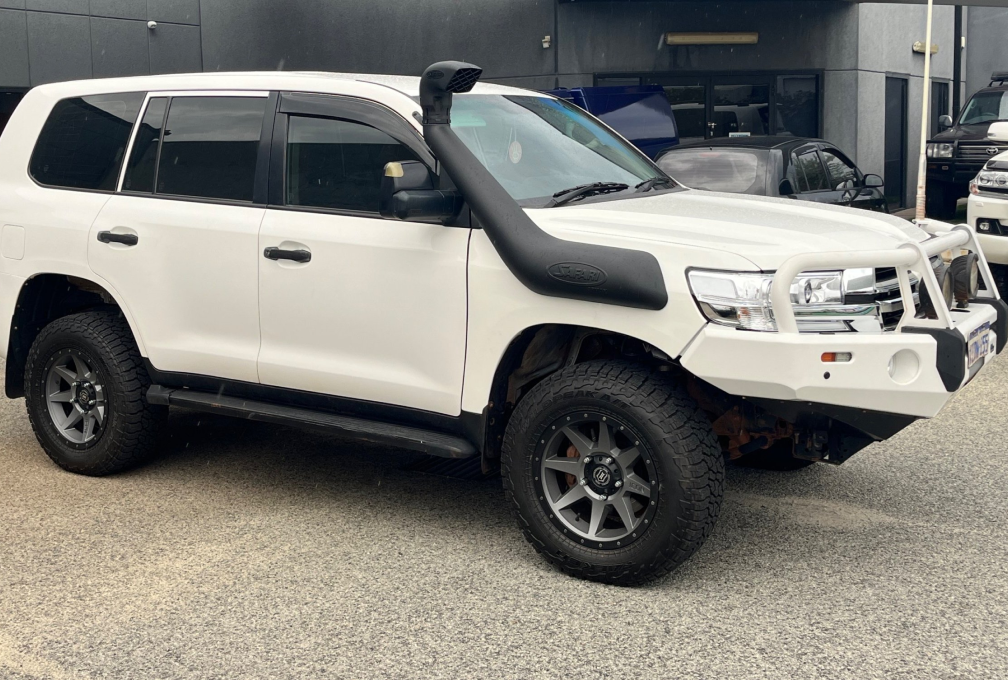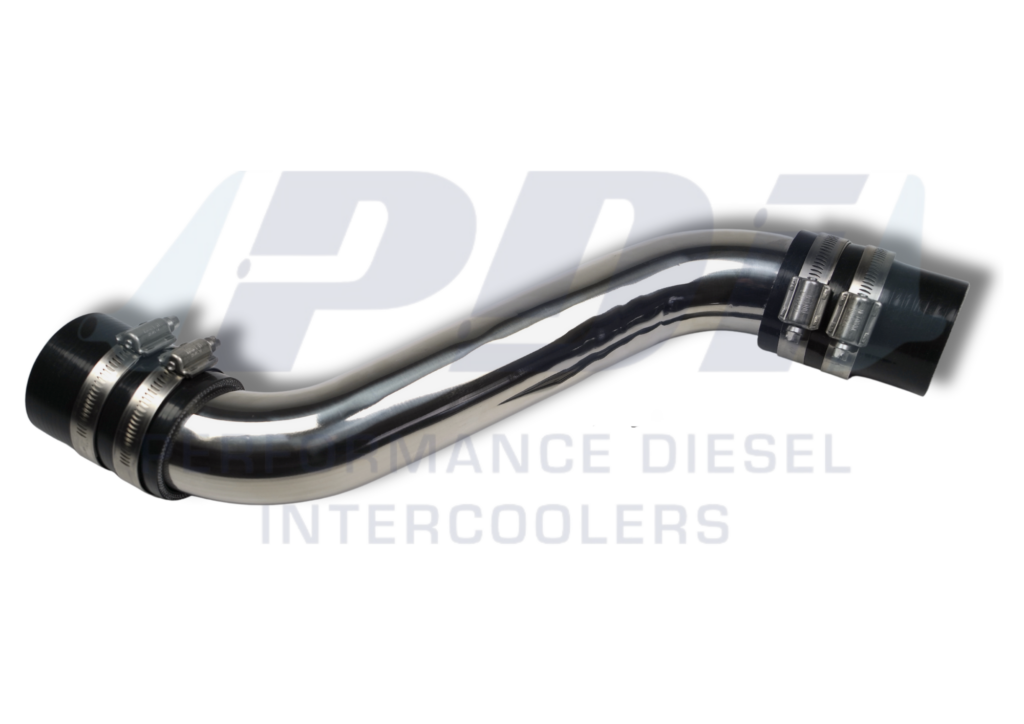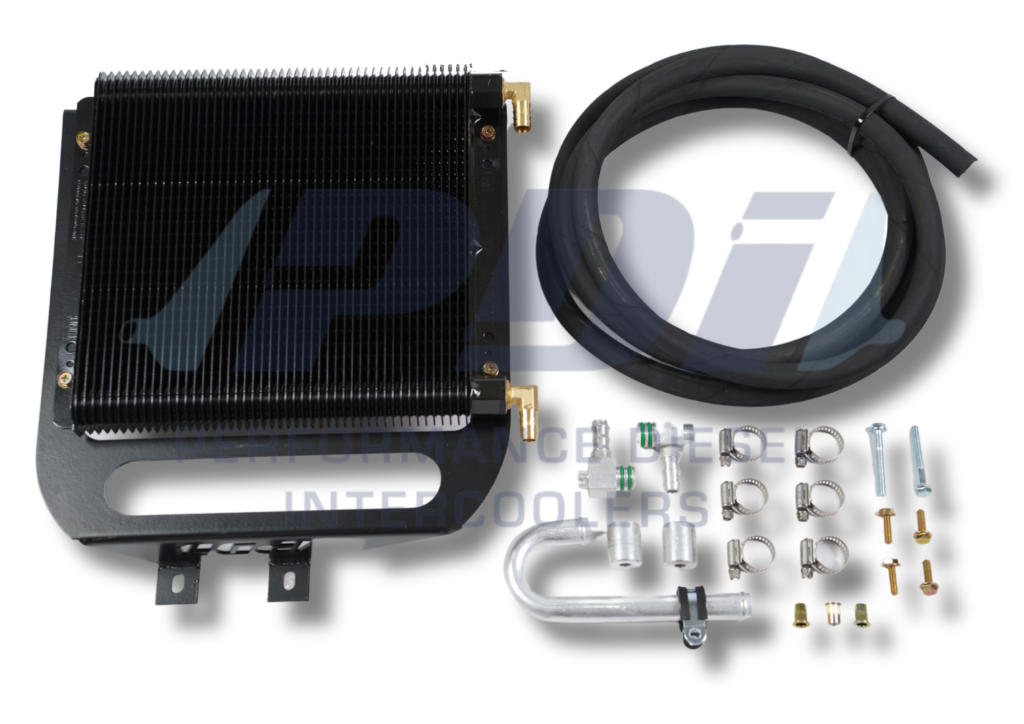High Performance Diesel Intercoolers in Australia
For the optimum in intercooler performance with no compromise in durability on your diesel 4WD.
Welcome to Performance Diesel Intercoolers, your premier destination for high-performance intercoolers and cooling solutions for diesel vehicles. With a focus on enhancing engine efficiency and maximizing power output, we offer a wide range of top-quality intercoolers designed to withstand the demands of high-performance diesel applications.
Featured Products
To make the best products for maximum performance and suitable for crossing through the harshest places we have.
$310.00 – $360.00 incl. GST
Check out our kits.
LATEST NEWS
Explore Our Latest Blog And News
June 6, 2025
Customer responds to the Drivability of the a VDJ79 Front Mount “100Nm feels like so much more than I expected”.
At the 2024 Perth 4WD show I got to catch up with Micheal from Off Road Images at the ARB stand. He has had a long relationship with ARB and does most of their photography. His new VDJ79 Facelift cruiser on site, all decked out and coffee machine turned on. I had been talking to […]
Read MoreJune 6, 2025
Field testing the 6R80 in South America (15,000km Through Argentina, Boliva, Peru, Chile and Brazil)
We are convinced the 6R80 auto conversion is the best auto swap to consider in the Landcruiser. We have sold quite a few of the 6R80 gearbox swaps and customers are reporting that they are very happy with the outcome. Its not just that we think can handle the power better than other options. Below […]
Read More
August 2, 2024
PDI Slimline Core for VDJ200 Series – Works with Winches.
The PDI Front Mount for the 200 series really allows it to maintain the cold day driving performance. The result is more spirited and allows the figures from the dyno sheet to be available all the time. It comes more into its own when loaded up, towing, playing around or on the beach where the […]
Read MoreFAQ
Frequently Asked Questions
The PDI Kits were developed to optimise the front mount installations and get the best components for the best flow.
A key aspect is that these are designed for off-road vehicles for those who want to take their 4WD into some of the harshest locations possible while providing trouble free performance.
We use the largest cores for the location and typically use bar and plate design as they are regarded as being of more durable construction and typically are able to handle the higher pressures. We are investigating the use of tube and fin designs as an option.
The pipework is 304 stainless steel and mandrel bent where possible. The ends of the pipes are prepared with a higher than normal flare to prevent the silicon hoses slipping off when the system is hot and your boost has hit 35-40psi.
Our silicon hoses are custom designed (where required) and constructed from 5 fibre layers within a total of 6mm thick material for maximum resistance and longevity.
Breeze Aero hose clamps are standard with our kits since we have found them to be the most reliable. T-bar clamps look impressive and do work, but the most reliable we have found is the conventional screw type Breeze clamps. They can take a surprising amount of torque and I have only damaged one from over torqueing it.
Brackets are made from mild steel for fatigue resistance and the use of a support bracket for the bonnet latch instead of asking the aluminium intercooler to do the work. If you hit some of the tracks in Australia, you will find we have the worst corrugations in the world and it is amazing what they break off and shake loose. The brackets are zinc plated and painted for protecti
Exhaust Gas Temperature (EGT) is measured in either the exhaust manifold or exhaust pipe. It is an indication of cylinder combustion temperature and will never be as high as actual combustion temperatures due to dissipation of heat into the cylinder head and pistons.
On diesels, a fuel rich burn will result in higher combustion temperatures. This is the opposite to petrol engines, where excess fuel is added under load and rather than being burnt, it evaporates and causes cooling, thus protecting the pistons and valves.
Back to diesels, cooling the compressed air charge, through intercooling, will result in a leaner (cooler) mixture can being achieved. From a performance perspective it means that the system can be pushed harder with more fuel being used to burn the extra oxygen.
An effective intercooler will reduce exhaust gas temperatures by over 100degC and get within a few degrees of the ambient temperature. This means that critical engine components can operate at a safer condition while still under heavy load.
This reduction in combustion temperatures is extra heat that does not need to be removed through the radiator. As long as your cooling system is functioning correctly there should be no change through the fitment of a FMIC.
The 1HZ has a great reputation for a solid worker. It also has a history of cracked heads and pistons with the early turbo systems with plenty of experiences of overheating.
The 1HZ is Toyotas indirect injection 4.2L, as opposed to the 1HD series that are all direct injection. Toyotas casting is very good but in the case of the 1HZ there is very little water jacket around the exhaust port, which means that when fuelling is increased (for more power) without sufficient air, the combustion temperatures rapidly rise and subsequent EGT becomes excessive. The steel around the exhaust port gets hot and expands, without the water presence and flow to equalise the temperatures in the steel around – this uneven rapid heating places the steel under stress and may result in a crack.
For demonstration a 1HZ cylinder head was cut through the exhaust port. During the cutting the internal stress resulting the in cut area opening up before the cut was complete. An inspection of cross-section shows the small water gallery around the port. Looking inside the water gallery a layer of rust and scale can be seen, which acts to reduce the gallery size and insulates the coolant from the steel. The scale is very hard and can only be lifted with a chemical treatment.
To have a successful experience with a turbo 1HZ:
Use a turbocharger that boosts early and is on boost under normal driving rpm.
Tune the system to have a lean burn when loaded up.
An efficient intercooler to get maximum cooling and lower EGT.
Run 15-18psi as this works well with the fuel capabilities of the std 10mm pump.
Don’t let the engine lug in the lower rpm with rich mixtures.
Run Toyota Red Long Life Coolant (thats not the Extra Long life coolant). Don’t mix coolants and flush if you have.
Clean the cooling system with a quality engine flush to remove rust and scale (R20 is a great corrosion dissolver and can be left in the engine for a week or more).
Run a genuine thermostat.
Consider adding extra fluid to the viscous coupling to make it pull more air.
If you still have cooling issues, then it has been suggested yours could have a casting variation limiting its ability to cool. While nobody is likely to investigate this, it could be that engines susceptible to overheating may have a reduced coolant volume in the head.
This has been a successful way to overcome the heat rising from the engine and it is standard to have one or two of these fitted under the intercooler on most quality top mounted units. We don’t consider these a great long term option for those looking for large power increases from more fuel and increase boost during the hotter months of the year.
We have customers who have needed to find a replacement to their top mounted intercooler simply because the fans stopped working just when they really needed to do their job. One customer quoted 130degC as the max temperature for his fans, before they turned off. Positioned with a hot engine below and the intercooler above (experiencing inlet air temps climbing over 200degC on higher boost engines) this temperature doesn’t seem too hard to reach. On an electronically controlled engine, where the system backs off the fuel with rising inlet air temp it just means less power, but for the mechanical pump setups it means your EGT is going to rise rapidly.
The max temperature rating on 12V thermo fans is limited by the motor winding insulation. The most expensive units ones seem to be rated to 115degC and cheaper models are around 100degC.
BUT, aren’t they designed for the job? They are designed to mounted at the front of the engine bay, pulling air through a radiator filled with coolant between 90 and 120degC. The air coming through will be cooler as its coming from the front of the car and your radiator isn’t 100% efficient at removing the heat.
The theory here is that the increased intake volume will increase the time it takes to fill the pipe at the higher pressure. The larger the pipework the greater the volume. Initial testing showed that the 2.5″ pipework was ideal for the air required to meet the fuel delivery capabilities for the engines covered. 2″ pipes are easier to route in tight engine bays, but will choke the potential.
On a Landcruiser 1HDFTE with around 160rwkw, a check was done with no intercooler and then after the Performance Diesel Intercoolers Front mount kit was installed. The results showed the boost built slightly quicker with no intercooler, but almost immediately the intercooled setup built torque faster and was much stronger throughout the rest of the power range. There was a 50rpm range where no intercooler was better.
The test clearly showed that lag should not be something to be concerned about when considering a PDI front mount intercooler kit.
Ive seen some articles written around the place about heat sink on intercoolers and how less mass is better which then apparently becomes part of the design strategy. While it is an interesting property of intercoolers, at PDI we consider it of secondary importance in the design of our intercooler kits on turbo diesels that are being loaded up.
In electronics a heat sink helps to move heat away from a hot component to allow it to continue to function. Typically they have fins with high surface area so heat can be dissipated. In high performance computers they introduce a liquid cooling system to extract the heat from the area completely and allow the components to run cooler.
In intercoolers, heat sink is the ability absorb heat from the compressed inlet air into the intercooler itself. In vehicles that are on and off boost (ie turbo petrol vehicles), the temperature of the inlet air varies in excess of 200degC and peaks can be taken off the top to try smooth out the air temperature and allow short burst of high load to be relatively safely achieved.
At Performance Diesel Intercoolers, we are not focused on smoothing out the temperature peaks as we supply intercoolers to the diesel performance market. Diesels are chosen for their ability to provide strong and constant torque when towing or working hard accelerating heavy vehicles for work or fun in tough conditions. Therefore our focus is on extracting the heat from the intercooler into the outside air and the result is that the inlet air is consistently cooler.
We get so many calls from customers who never before understood how hot the hot side of the intercooler can get and how the cold side of their PDI intercooler can be so close to ambient. Our own daily is an upgraded FTE powered 105 series Landcruiser and the cold air is between 3 and 7 degrees above ambient when driving around without a trailer. When towing the heavy camper trailer our intake temperatures rise to 15degC above ambient, pulling a constant 100-200degC out of the air at constant full load.
The fact that a PDI intercooler can do that consistently makes you think that it doesn’t matter that an end tank may have greater mass due to it being cast (instead of from sheet metal) since it is cold from the air passing through it anyway and the stronger bar and plate cores have proved to be exceedingly durable.
All PDI intercoolers use cast alloy end tanks for the ability to maximise intercooler size and optimise flow in complex areas that have fixtures (body, air con lines etc) which would limit the ideal placement of the intercooler.
If we consider the physical design of a bar and plate intercooler core. Taking a sample which has 28 internal fins 7mm across the width of a 76mm core, which since both sides are exposed is around 40cm of aluminium the air must travel per internal core. For a core 550mm long and 300mm high that equates 3.5 square meters of metal that air is forced to travel very close to.
The internal cross sectional area of the inside of the end tank is far less (0.1 square meter) and most of the air is not forced to travel close to the end tanks either. Any heat transfer back into the air flow is going to be minimal. Whatever improvement for using a thinner material on the end tanks to reduce heat transfer can only be applied to the 0.1/3.4 = 3% so an optimistic 20% reduction in transfer capability by reducing mass of the end tanks may improve efficiency by 0.6%, thats if heat sink is indeed an issue.
Correctly designed cast tanks are going to flow better with smoother internal transitions and they are not going to split along a weld.
I’ve got great memories of the awesome adventure I took in that car. It was an expedition to Magadan on the Road of Bones with our friends at 4×4 World Explorer and the photos are taken in Siberia.
For starters we picked up an 80 series locally with a petrol engine that ran well, but wasn’t suited to the vehicle’s upcoming life touring the world.
On a previous trip along the Canning Stock Route with Thomas and his friends at 4×4 World Explorer, I’d noticed (and discounted) a 105 vehicle with a wrecked body, but had za good chassis. After my return to Perth when I decided I needed one for a Lexus LX470 bodied, 1HD-FTE powered 105 I made contact with the owner. We found that the 1HZ motor seemed okay, but started and stopped with a problem that was likely related to the electronic controls on the injection pump.
With the body off, we cleaned up the red mud off the 1HZ, installed it into the 80 with a Grunter Extreme from GTurbo and a large bar and plate front mount intercooler and exported it to Kuala Lumpur for the start of it’s adventure. We kept the Eastern Goldfields 4WD Club number plates in recognition of it’s past touring the interior of WA. The very first owner turned out to be a mate around the corner who proposed to his wife with this vehicle!
So with plenty of adventures already under it’s belt, my friend and his son joined the convoy from 4×4 World Explorer and drove north from Kuala Lumpur, through Thailand, the mountains of Laos, and into China. I joined them in northern China with my wife and father in law and we headed west into Mongolia, then north into Siberia where the real adventure began and the party thinned out.
Over the next month we made our way along the renowned Road of Bones to the farthest eastern part of Russia accessible by road, and then to Vladivostok. Plenty of mountainous scenery and dirt roads with a few falls of snow just so we knew it could get really cold there.
Performance of the package with the GTurbo and front mount intercooler was exceptional. Fuel economy was far superior to the non aspirated 1HZ in the convoy, as was performance. The ability of the vehicle to easily maintain speed up the long mountain passes in China quickly became legendary as the other 1HZ’s fell away at the high altitudes.
Not only did this vehicle live a full life in the rough goldfields of Western Australia, and drive to the most eastern point of the Asian landmass possible, it’s next trip took it back into China, Everest Base Camp, Moscow, the top end of Norway, down the coast and into London. So it’s been the furthest east, the furthest south, the furthest north and the furthest west of the huge landmass of Asia and Europe. It’s completed a 2 month trip into Africa and next year will be off to South America for another 2 month trip as the main support vehicle so its heavily loaded.
These trips alone give proof to the capacity of a well tuned 1HZ to handle a properly matched turbocharger and the power and efficiencies of a front mount intercooler.




